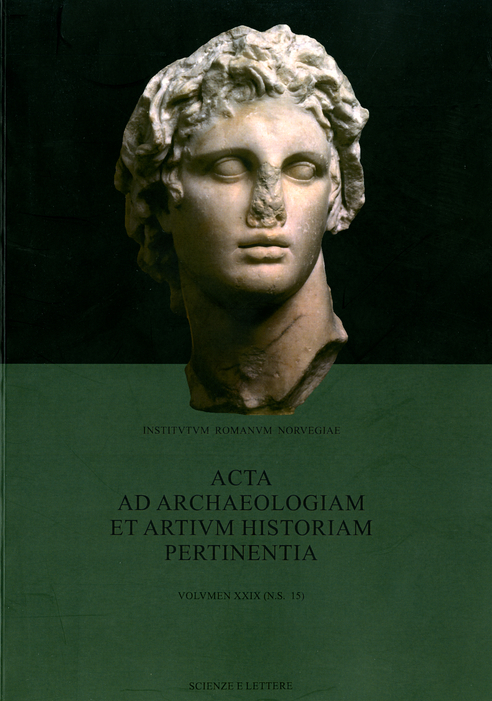Costantino da Bisanzio a Costantinopoli
DOI:
https://doi.org/10.5617/acta.6077Emneord (Nøkkelord):
Istanbul (Turkey), Constantine, archaeology, art history, Mediterranean studies, Costantino, CostantinopoliSammendrag
Constantine was a Christian. Of that there can be no doubt. The surviving signs of paganism visible in Constantine are rather the result of his education and culture. They in no way whatsoever constitute evidence for the continuing imperial worship of pagan divinities in the Constantinian period. Examination of the literary sources and archaeological remains allows us to conclude that it is possible to recognize traces of the former Byzantium of Septimius Severus in the archaeological sites of the Strategion and a building beneath the Baths of Zeuxippos. In AD 324-330, the city on the Bosporus underwent a radical revolution: the city of Constantine went beyond the walls of the third century AD and it expanded to the west along the east-west axis. The previous city within the third-century walls was completely undermined in its north-south and east-west axes; there arose a new diagonal axis running northeast/southwest, which departed from the column of the Goths and arrived at the Augustaion, at the Hippodrome, and at the Palace (all Constantinian constructions, with St. Irene included). The centre of power (Palace-Hippodrome) was intimately linked to the Christian pole (St. Irene as the first cathedral and the pre-Justinianic St. Sophia that lay on the same axis and even closer to the Palace). According to the Chronicon Paschale, the church of St. Sophia was founded by Constantine in AD 326. The emperor deliberately abandoned the acropolis of Byzantium, and Byzantium was absorbed by the new city and obliterated by the new diagonal axis. Constantinople is truly Constantine’s city.
Nedlastinger
Hvordan referere
Utgave
Seksjon
Lisens

This work is licensed under a Creative Commons Attribution-NonCommercial 4.0 International License.
Authors who publish with this journal agree to the following terms:
- Authors retain copyright and grant the journal right of first publication with the work simultaneously licensed under a Creative Commons Attribution License that allows others to share the work with an acknowledgment of the work's authorship and initial publication in this journal.
- Authors are able to enter into separate, additional contractual arrangements for the non-exclusive distribution of the journal's published version of the work (e.g., post it to an institutional repository or publish it in a book), with an acknowledgement of its initial publication in this journal.
- Authors are permitted and encouraged to post their work online (e.g., in institutional repositories or on their website) prior to and during the submission process, as it can lead to productive exchanges, as well as earlier and greater citation of published work (See The Effect of Open Access).





